Related Research Articles
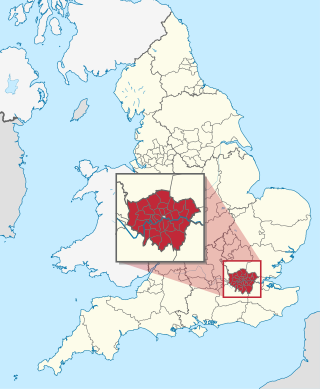
The London boroughs are the 32 local authority districts that together with the City of London make up the administrative area of Greater London, England; each is governed by a London borough council. The present London boroughs were all created at the same time as Greater London on 1 April 1965 by the London Government Act 1963 and are a type of local government district. Twelve were designated as Inner London boroughs and twenty as Outer London boroughs. The City of London, the historic centre, is a separate ceremonial county and sui generis local government district that functions quite differently from a London borough. However, the two counties together comprise the administrative area of Greater London as well as the London Region, all of which is also governed by the Greater London Authority, under the Mayor of London.

The London Borough of Hackney is a London borough in Inner London, England. The historical and administrative heart of Hackney is Mare Street, which lies 5 miles (8 km) north-east of Charing Cross. The borough is named after Hackney, its principal district. Southern and eastern parts of the borough are popularly regarded as being part of east London that spans some of the traditional East End of London with the northwest belonging to north London. Its population is estimated to be 281,120.

The London Borough of Haringey is a London borough in North London, classified by some definitions as part of Inner London, and by others as part of Outer London. It was created in 1965 by the amalgamation of three former boroughs. It shares borders with six other London boroughs. Clockwise from the north, they are: Enfield, Waltham Forest, Hackney, Islington, Camden, and Barnet.
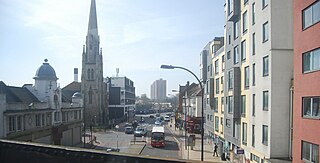
Lewisham is a London borough in south-east London, England. It forms part of Inner London. The principal settlement of the borough is Lewisham. The local authority is Lewisham London Borough Council, based in Catford. The Prime Meridian passes through Lewisham. Blackheath, Goldsmiths, University of London and Millwall F.C. are located within the borough.

The Inner London Education Authority (ILEA) was the local education authority for the City of London and the 12 Inner London boroughs from 1965 until its abolition in 1990. From 1965 to 1986 it was an ad hoc committee of the Greater London Council; on 1 April 1986 it was reconstituted as a directly elected body corporate.
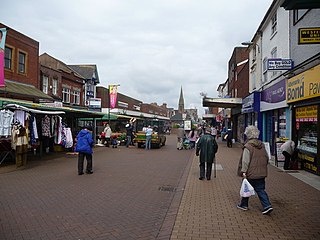
Sandwell is a metropolitan borough of the West Midlands county in England. The borough is named after the Sandwell Priory, and spans a densely populated part of the West Midlands conurbation. Sandwell Metropolitan Borough Council defines the borough as the six amalgamated towns of Oldbury, Rowley Regis, Smethwick, Tipton, Wednesbury and West Bromwich. Rowley Regis includes the towns of Blackheath and Cradley Heath.

The County of London was a county of England from 1889 to 1965, corresponding to the area known today as Inner London. It was created as part of the general introduction of elected county government in England, by way of the Local Government Act 1888. The Act created an administrative County of London, which included within its territory the City of London. However, the City of London and the County of London formed separate ceremonial counties for "non-administrative" purposes. The local authority for the county was the London County Council (LCC), which initially performed only a limited range of functions, but gained further powers during its 76-year existence. The LCC provided very few services within the City of London, where the ancient Corporation monopolised local governance. In 1900, the lower-tier civil parishes and district boards were replaced with 28 new metropolitan boroughs. The territory of the county was 74,903 acres (303.12 km2) in 1961. During its existence, there was a long-term decline in population as more residents moved into the outer suburbs; there were periodic reviews of the local government structures in the greater London area and several failed attempts to expand the boundaries of the county. In 1965, the London Government Act 1963 replaced the county with the much larger Greater London administrative area.
Local education authorities (LEAs) were defined in England and Wales as the local councils responsible for education within their jurisdictions. The term was introduced by the Education Act 1902 which transferred education powers from school boards to existing local councils.
Graveney School is a secondary school and sixth form with academy status in the Furzedown area of Tooting, southwest London, England. The school has a partially selective admissions policy. In the beginning of 2015, the school was assessed in an Ofsted inspection report as outstanding.
Rotherham Metropolitan Borough Council is the local authority for Rotherham in South Yorkshire, England. The council is elected every four years. Since the last boundary changes in 2004, 63 councillors have been elected from 21 wards.
In England, a partially selective school is one of a few dozen state-funded secondary schools that select a proportion of their intake by ability or aptitude, permitted as a continuation of arrangements that existed prior to 1997. Though treated together by current legislation, they are of two types: bilateral schools in remnants of the Tripartite System, and former grant-maintained schools that introduced partial selection in the 1990s. While technically classified as comprehensive schools, they occupy a middle ground between grammar schools and true comprehensives, and many of the arguments for and against grammar schools also apply to these schools. Although there are relatively few schools of this type, several of them score very highly in national performance tables, and are among the most over-subscribed schools in the country.
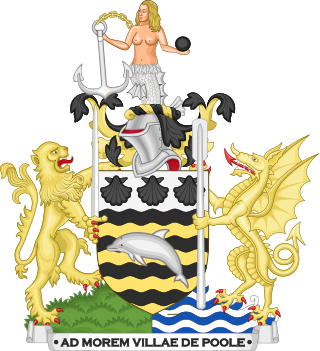
Poole Borough Council was the unitary authority responsible for local government in the Borough of Poole, Dorset, England. It was created on 1 April 1997 following a review by the Local Government Commission for England (1992), becoming administratively independent from Dorset County Council, and ceased to exist on 1 April 2019. Its council comprised 16 wards and 42 councillors and was controlled by a Conservative administration before it was merged into Bournemouth, Christchurch and Poole Council.
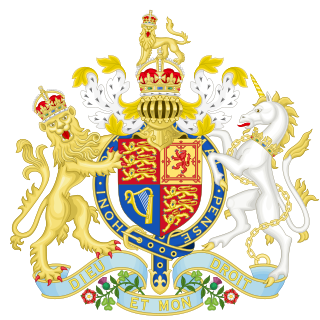
The School Standards and Framework Act 1998 was the major education legislation passed by the incoming Labour government led by Tony Blair. This Act:

Greenwich London Borough Council is the local authority for the Royal Borough of Greenwich in London, England. The council is elected every four years. Since the last boundary changes in 2022, 55 councillors have been elected from 23 wards.
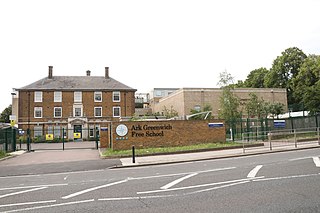
Ark Greenwich Free School is a co-educational secondary free school located in the Woolwich area of the Royal Borough of Greenwich in London, England. The school opened as Greenwich Free School in September 2012 with an initial intake of 11-year-old pupils, with the school expanding admissions every year to eventually become a full secondary school with a sixth form.

Rotherham Metropolitan Borough Council is the local authority of the Metropolitan Borough of Rotherham in South Yorkshire, England. It is a metropolitan district council, one of four in South Yorkshire and one of 36 in the metropolitan counties of England. The council was created in 1974 under the Local Government Act 1972.
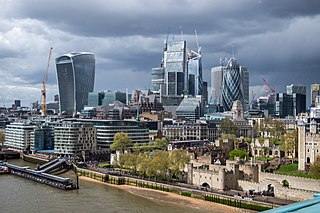
Greater London is the administrative area of London, England, which is coterminous with the London region. It contains 33 local government districts: the 32 London boroughs, which form a ceremonial county also called Greater London, and the City of London. The Greater London Authority is responsible for strategic local government across the region, and regular local government is the responsibility of the borough councils and the City of London Corporation. Greater London is bordered by the ceremonial counties of Hertfordshire to the north, Essex to the north-east, Kent to the south-east, Surrey to the south, and Berkshire and Buckinghamshire to the west.
The 50% Rule in English faith school admissions was introduced in 2010 and stipulates that where newly established academies with a religious character are oversubscribed, at least 50% of their places must be open places, i.e. allocated without reference to faith. The rule is sometimes referred to as the Faith Cap on admissions. However, as the open places are just as accessible to faith applicants as non-faith applicants, in practice the rule does not explicitly prevent such schools from having more than 50% of students with a faith affiliation.
A nodal point in UK school admissions over-subscription criteria is a geographical location, used to specify a school's catchment. If a school is oversubscribed, the distance from applicants' homes to the nodal point can be used for prioritising admissions. This can ensure the school not only serves pupils closest to it but also those living in other areas, for example areas that have more limited access to school places. Nodal points are sometimes known as admissions points or centroid points.
References
- 1 2 "School place planning" (PDF). Education England. Audit Commission. Archived from the original (PDF) on May 6, 2012. Retrieved 9 August 2017.
- ↑ "Parents' Experiences of the Process of Choosing a Secondary School" (PDF). National Archives. Department for Education and Skills. June 2001. Archived from the original (PDF) on 23 March 2013. Retrieved 9 August 2017.
- 1 2 Ewens, David. "Cross-border pupil mobility An analysis of the 2002 London Pupil Dataset" (PDF). Bristol University. Greater London Authority. Retrieved 10 August 2017.
- ↑ R v Greenwich London Borough Council, ex parte John Ball Primary School,88 LGR 589 [1990] Fam Law 469(1989).
- ↑ "Regina v Greenwich London Borough Council, Ex parte Governors of the John Ball Primary School". Times Law Reports. The Times. 27 September 1989.
- 1 2 "Select Committee on Education and Skills Fourth Report". UK Parliament. Retrieved 9 August 2017. This article contains quotations from this source, which is available under the Open Parliament Licence Archived 2017-03-08 at the Wayback Machine . © Parliamentary copyright 2004.
- ↑ "School Standards and Framework Act 1998, Section 86" . Retrieved 15 August 2017.
- 1 2 3 "School admissions code (2014)". GOV.UK . Department for Education. Retrieved 10 August 2017.
- ↑ R v Rotherham Metropolitan Council ex parte Clark and others,EWCA Civ 2768(Court of Appeal (Civil Division)04 November 1999).
- ↑ O'Hanlon, Kate (26 November 1997). "Law Report: Policy must allow expression of parental preference". The Independent. Retrieved 11 August 2017.
- ↑ "Regina v Rotherham Metropolitan Borough Council, Ex parte Clark and Others". Times Law Reports. The Times. 20 November 1997.
- ↑ "Determinations of admissions policy objections against the Governing Body of Lady Margaret School, Hammersmith & Fulham - Case references:ADA/001136; ADA/001160; ADA/001161; ADA/001162; ADA/001166; ADA/001167, Date of decision: 2 August 2007". National Archives. Schools adjudicator. Archived from the original on 18 February 2011. Retrieved 10 August 2017.
- ↑ "Brighton and Hove Secondary Admissions Catchment Boundaries for 2016-17" (PDF). Brighton & Hove County Council. Retrieved 11 August 2017.
- 1 2 "Determination of objection against Bromley LEA's admission policy for Bishop Justus C of E School, Bromley - Case reference: ADA/000493, ADA/000494, ADA/000495, Date of decision: 13 February 2004". National Archives. Schools Adjudicator. Archived from the original on 18 February 2011. Retrieved 10 August 2017.
- ↑ "Determination of admissions policy objection against Buckinghamshire County Council for The John Hampden Grammar School - Case reference: ADA/000541, ADA/000567, ADA/00548, Date of decision: 27 July 2004". National Archives. Schools Adjudicator. Archived from the original on 18 February 2011. Retrieved 10 August 2017.
- ↑ "Buckinghamshire maintained schools catchment area maps (2011)" (PDF). Buckinghamshire County Council. Retrieved 10 August 2017.
- ↑ "Rotherham School Catchment Areas 2018". Google Maps. Retrieved 22 September 2017.
- ↑ "Determination of admissions policy objection against Castle School Education Trust for Downend School, South Gloucestershire - Case reference: REF3342, Date of decision: 29 September 2017" (PDF). Office of the Schools Adjudicator. Retrieved 2 October 2017.
- ↑ "Determination of objection against London Borough of Hounslow for community primary schools in Hounslow: Case Reference ADA3277, Decision date: 25 September 2017" (PDF). Office of the Schools Adjudicator. Retrieved 25 September 2017.
- ↑ "Sandwell Academy Initiative Update". Sandwell Metropolitan Borough Council. Retrieved 24 August 2017.
- ↑ "Sandwell Academy Centroid Points" (PDF). Sandwell Academy. Retrieved 24 August 2017.
- ↑ "Consultation Findings: School Admissions Criteria" (PDF). London Borough of Hillingdon. Retrieved 24 August 2017.
- ↑ "King Edward VI School - Admissions Policy 2017" (PDF). King Edward V1 School. Retrieved 24 August 2017.
- ↑ Davey, Edward. "Early Day Motion 1206 - The Greenwich Judgement" . Retrieved 9 August 2017.
- ↑ Burstow, Paul. "Early day motion 686 - Greenwich Judgment and School Admission Policy". UK Parliament. Retrieved 9 August 2017.
- ↑ "Borough seeks to overturn schools ruling". localGov. Retrieved 9 August 2017.
- ↑ Fitzgerald, Todd (18 Mar 2015). "Manchester council told high school admissions policy breaches government guidelines". Manchester Evening News. Retrieved 22 August 2017.